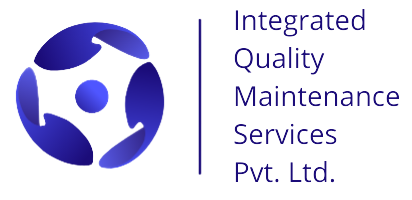

PROCESS SAFETY MANAGEMENT (PSM)
What Is Process Safety Management?
PSM is an effective tool to systematically manage process safety in hazardous process industries. The elements of PSM cover all the aspects which are vital in order for an industry to manage process safety and improve the HSE performance of any industry. There is a potential for an accidental release of hazardous chemicals at any time if not properly controlled, creating the possibility of disaster.
IQMS has a vide experience of implementing and improving a PSM program in chemical industries. We have performed numerous PSM Gap analysis & implementation programs. Our comprehensive Process Safety Management (PSM) training and consulting services help our clients to identify and manage risks associated with highly hazardous chemicals.
PSM was originally proposed by the OSHA in 1990 to assure safe and healthful workplaces.
Objectives
- Develop and maintain written safe procedures and information related to chemicals, processes, and workplace hazards.
- Review or Establish a response system and hazard assessment.
- Review, Develop, and Implement written Safe & Standard Operating Procedures (SOPs).
- Establish a quality assurance program.
- Establish an appropriate maintenance system.
- Provide appropriate operation information and training to the employees and workers including contract personals.
- Educate and train the employees for emergency response.
- Conduct PSSR (Pre-Startup Safety Review) of all newly modified and installed systems.
- Review or Establish and Implement written MOCs (Management Of Changes).
PROCESS SAFETY MANAGEMENT (PSM)
PSM Gap Analysis
The first step to developing an effective PSM program is to conduct a Gap Analysis Audit. Gap Analysis provides the basis to the management to identify the areas that need to be focused on to ensure process safety. IQMS provides a cost-effective 1-2 day review of your site operations, policies, and procedures to help you identify the weakness and major issues in the implementation of PSM programs.
Objectives
- Comply with applicable portions of the PSM program regulations.
- Identify deficiencies in program documentation or implementation.
Suggest methods or improvements that might be implemented to assist the facility with addressing documentation requirements and appropriate implementation.
PSM Implementation
Elements of PSM program vary site to site and industry to industry. The most vital element for one industry may not make any sense in another industry. The relevance and importance of various PSM elements depend upon the type of process, type of unit operations involved, type of industry, size of the industry, and a number of employees.
IQMS, therefore, designs a customized PSM program considering the only relevant and sufficient elements of PSM which encompasses all the aspects of process safety for that unit.
Apart from the implementation of the complete PSM program, we also provide support for the implementation of one or more elements of PSM from the followings:
- Employee Participation
- Process Safety Information
- Process Hazard Analysis
- Operating Procedures
- Training
- Contractors
- Pre-Startup Safety Review
- Mechanical Integrity/ Maintenance
- Hot Work
- Management of Change
- Incident Investigation
- Emergency Planning And Response
- Auditing
PSM Training
Training is an important part of the PSM implementation program. Before the PSM program is implemented, it is vital to impart its training to the concerned team members.
The typical contents of our PSM Training program are:
- What is PSM
- What are the elements of PSM
- What is the role of an individual element in the management of overall process safety
- How various elements of PSM are interlinked
- How to implement elements of PSM
- How to make a team for implementation of the PSM program
- Documentation for PSM
Need of assessment and improvement
OUR METHODOLOGY
UNDERSTAND
Our first step is to understand the SOW clearly. What is the purpose & primary goal of the client by conducting respective assignment?
PREREQUISITE
It’s one of the most crucial stage in any project. Before Site-Visit, required documents are required being collected from client for smooth execution of projects.
SITE-VISIT
Along with site visit, pre & post-meetings are conducted at site to justify every single aspect of the project execution.
DRAFT REPORT
Draft report is prepared & submitted to client along with our observations & recommendations for their review.
FINAL REPORT
Report is finalized after incorporating the client comments (if any) and submitted to client in soft & hard copies.





